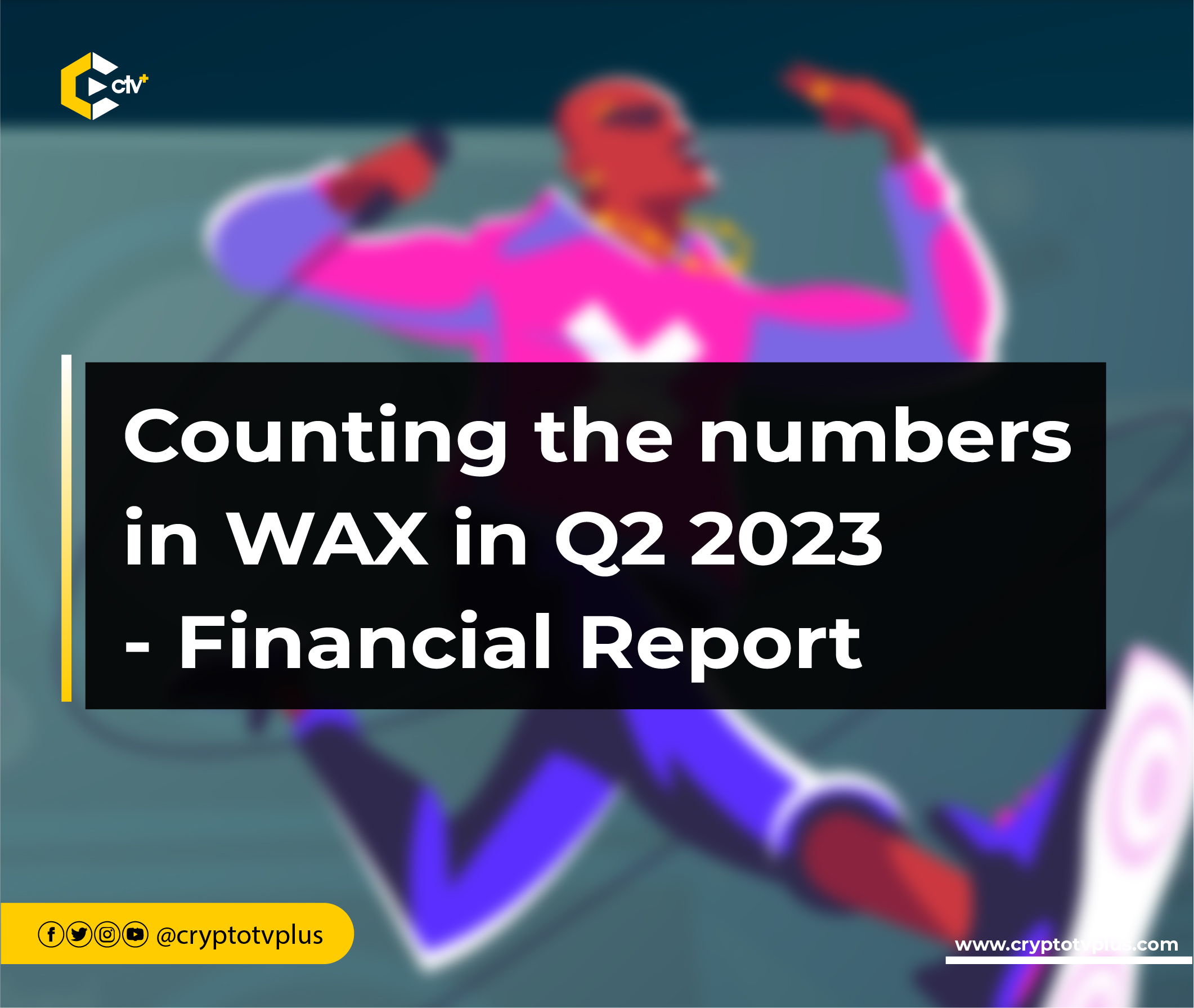News
Counting the numbers in WAX in Q2 2023 – Financial Report

Wax, a Layer 1 blockchain designed specifically for blockchain gaming and NFT use cases, has been making waves since its launch in 2019. With features such as a blockchain explorer, a cloud-based wallet, an NFT marketplace, and an NFT creator, Wax offers a comprehensive ecosystem for its users. Notably, it successfully raised over $60 million during its ICO in 2017.
However, the second quarter of 2023 was a time of both triumphs and challenges for the broader cryptocurrency market. While a temporary frenzy around meme coins brought some highs, this enthusiasm was short-lived due to increased regulatory scrutiny led by the SEC and other governing bodies. The crackdown targeted major crypto exchanges like Binance and Coinbase, raising concerns about the classification of most layer-one blockchain coins as securities, with Bitcoin and Ethereum being the exceptions. Although Wax wasn’t explicitly mentioned, the prevailing market sentiments undeniably impacted its valuation.
Despite experiencing a 33% decrease in price QoQ, $WAX’s market cap did not reflect this decline as significantly as anticipated. The market cap only sustained an 8% decrease, which can be attributed to the increase in circulating supply by up to 27% QoQ. As a result, its market cap ranking improved from 176th at the beginning of the quarter to 160th by the end.
$WAX’s unique resource model, which relies on a 2% tax on secondary NFT sales rather than gas fees, led to a 50% decrease in revenue, amounting to $105,000. This decline in revenue can be attributed to the decrease in the volume of NFT sales.
The network activity on the chain has remained relatively stable. In Q2 2023, there was an 11% decrease in average daily activity to 17.8, while daily active addresses saw a slight increase of 0.3% to reach 339,000.
During Q2 of 2023, there were over 1 million active addresses, which marked a 27% decrease from the previous quarter. Out of the 1.1 million addresses, 24% were only active for one day within the quarter. Additionally, more than 50% of the active addresses remained active for over seven days during the same period.
The launch of their NFT marketing campaign resulted in a notable 38% increase in new addresses within the ecosystem. Remarkably, out of this 38% increase, they managed to retain 61% as active addresses throughout May, April, and June.
By the end of June, the network had 68 validators with $wax voting power. However, only the top 21 validators based on $wax can participate in a consensus round. The total value locked in the network saw a 22% increase QoQ, reaching 1.96 billion $wax. This increase didn’t come from new stakes, but rather from wax team members staking $wax they had accumulated over the years but never staked before.
It’s important to note that not all coins are staked to validators; some are staked to the wax resource model.
By the end of the quarter, the minimum threshold of $wax required for a two-thirds malicious attack to take over the network was 992 million $wax ($46 million). The network validators are well distributed, with Europe having the highest concentration, consisting of 8 validators.
To sum it up, the network witnessed stable daily transactions and active addresses. However, certain metrics experienced a decline, such as Wax revenue, NFT volume (-44%), and DeFi TVL (-66%).
But let’s accentuate the positive: despite market sentiment, there was a significant rise in the number of new addresses (+22%) and a notable increase in daily unique NFT traders (+38%).
Moreover, the introduction of network upgrades that facilitate integration with the Antelope IBC (inter-blockchain communication) brings a sense of optimism.
Read also:
Upland & EOS system dominate the EOS ecosystem – Q2 Report
South Africa requires exchanges to be licensed by year end












